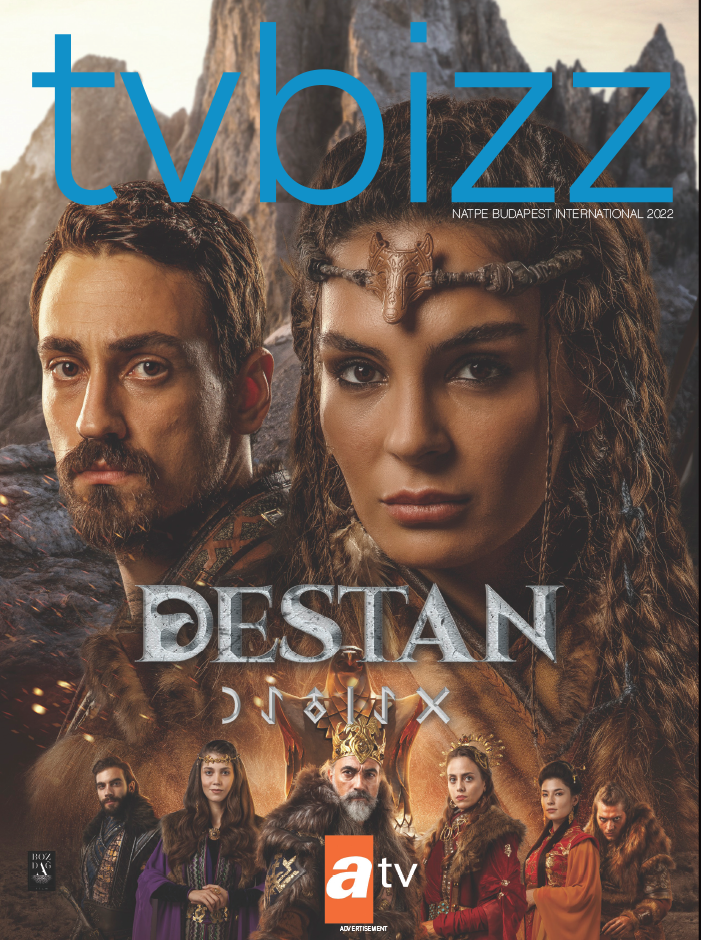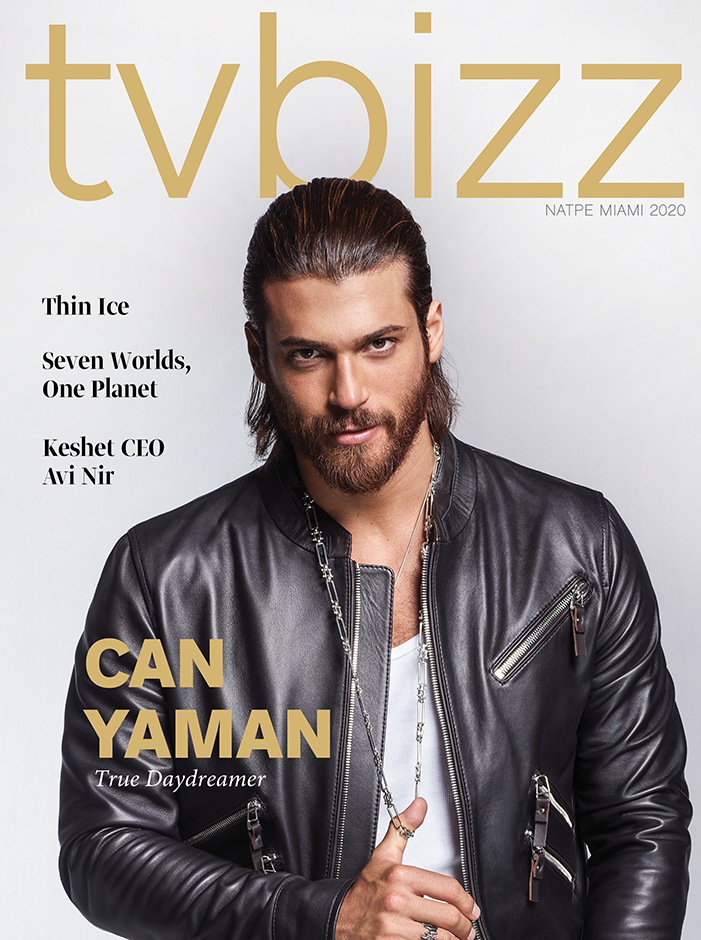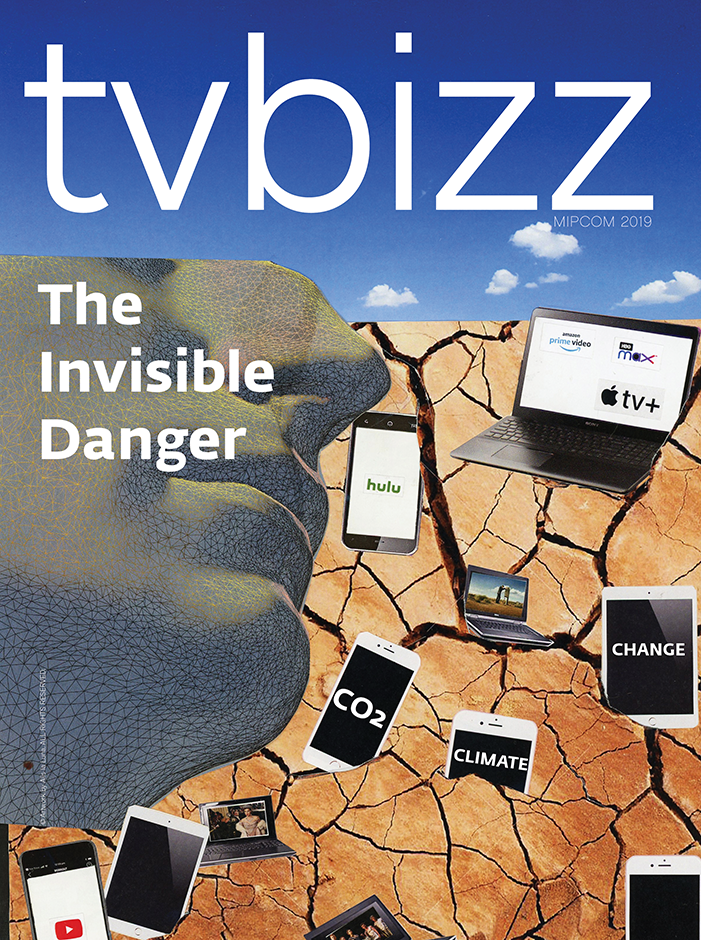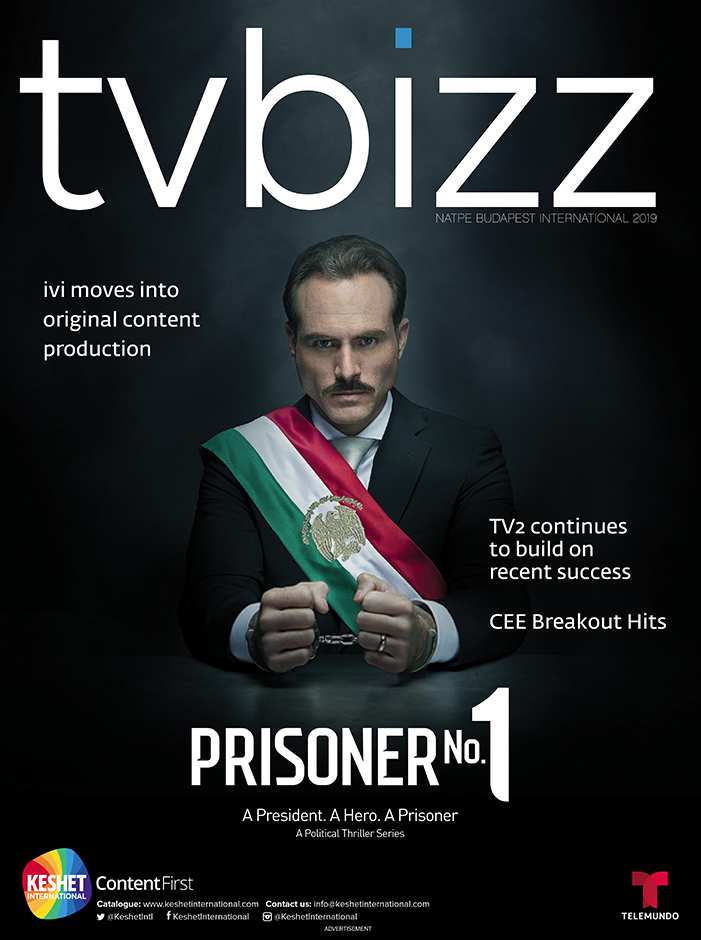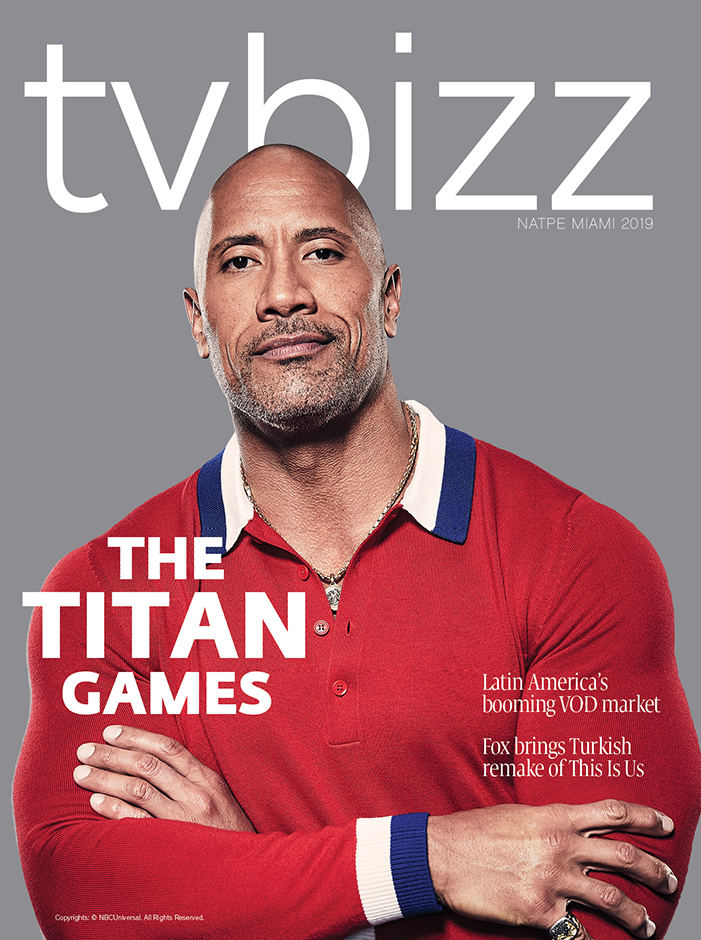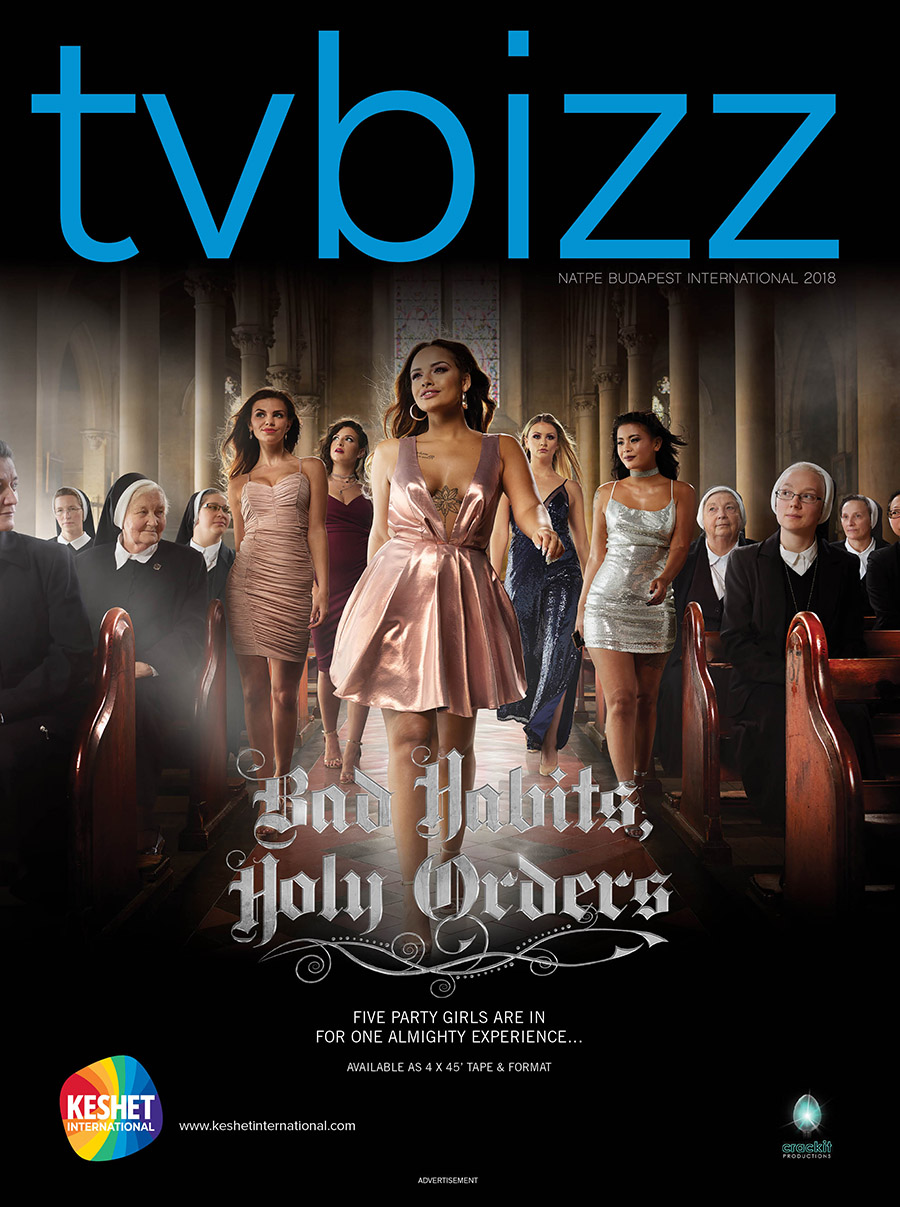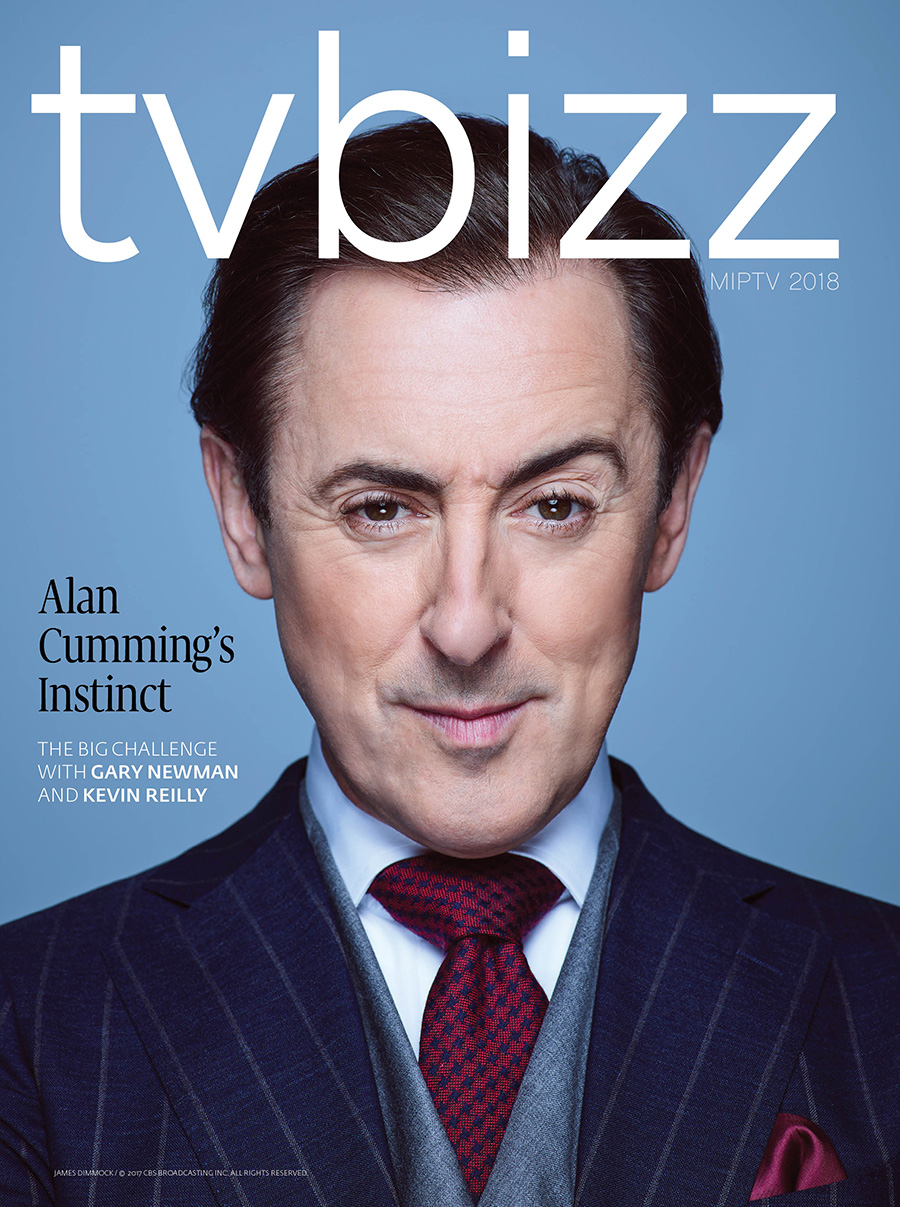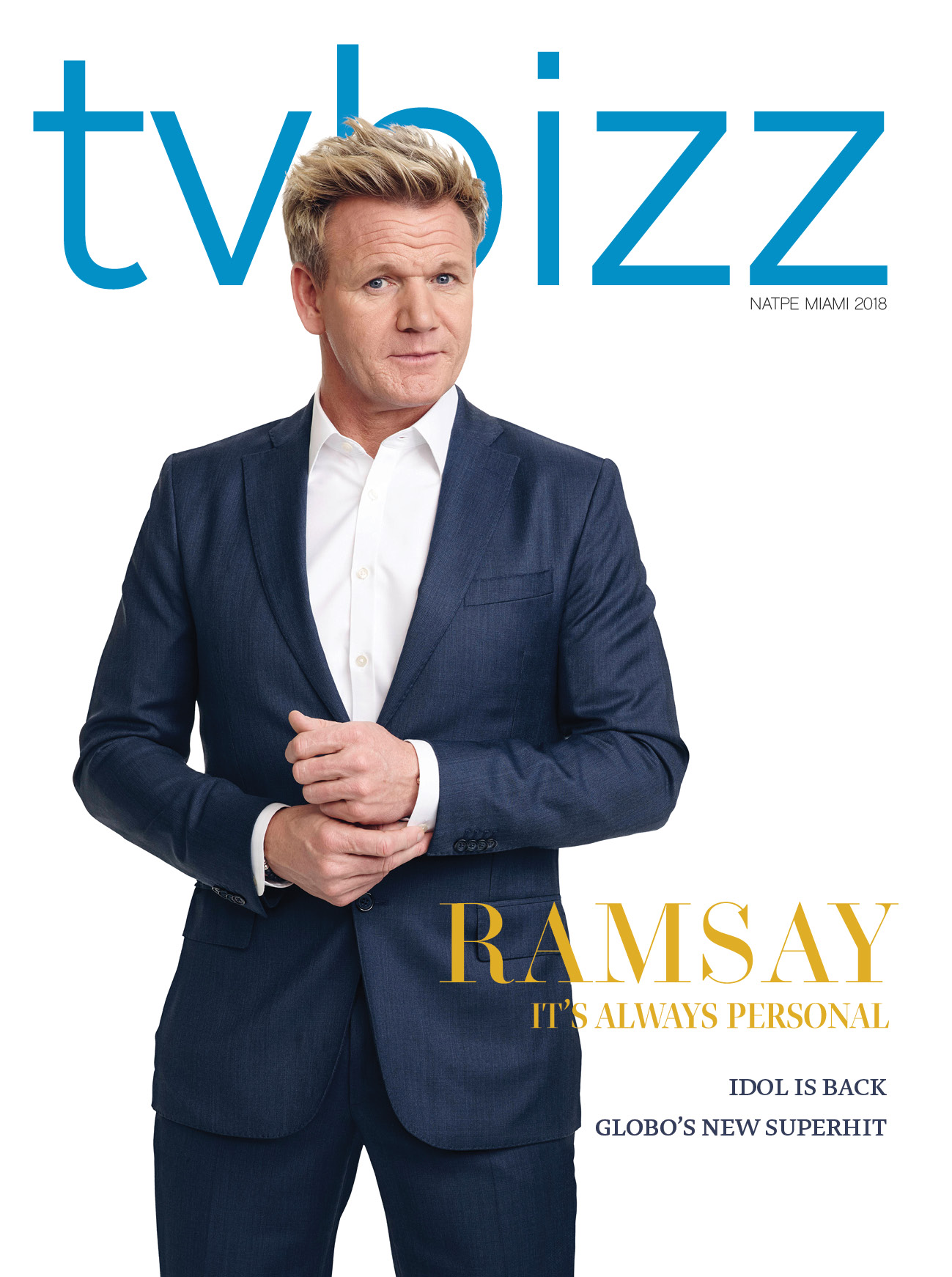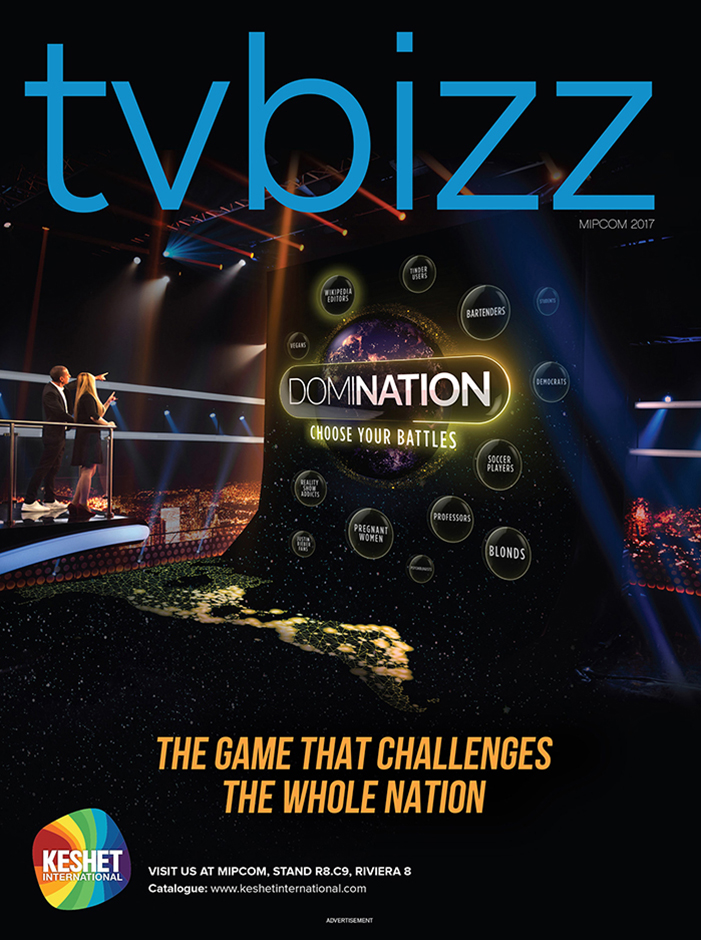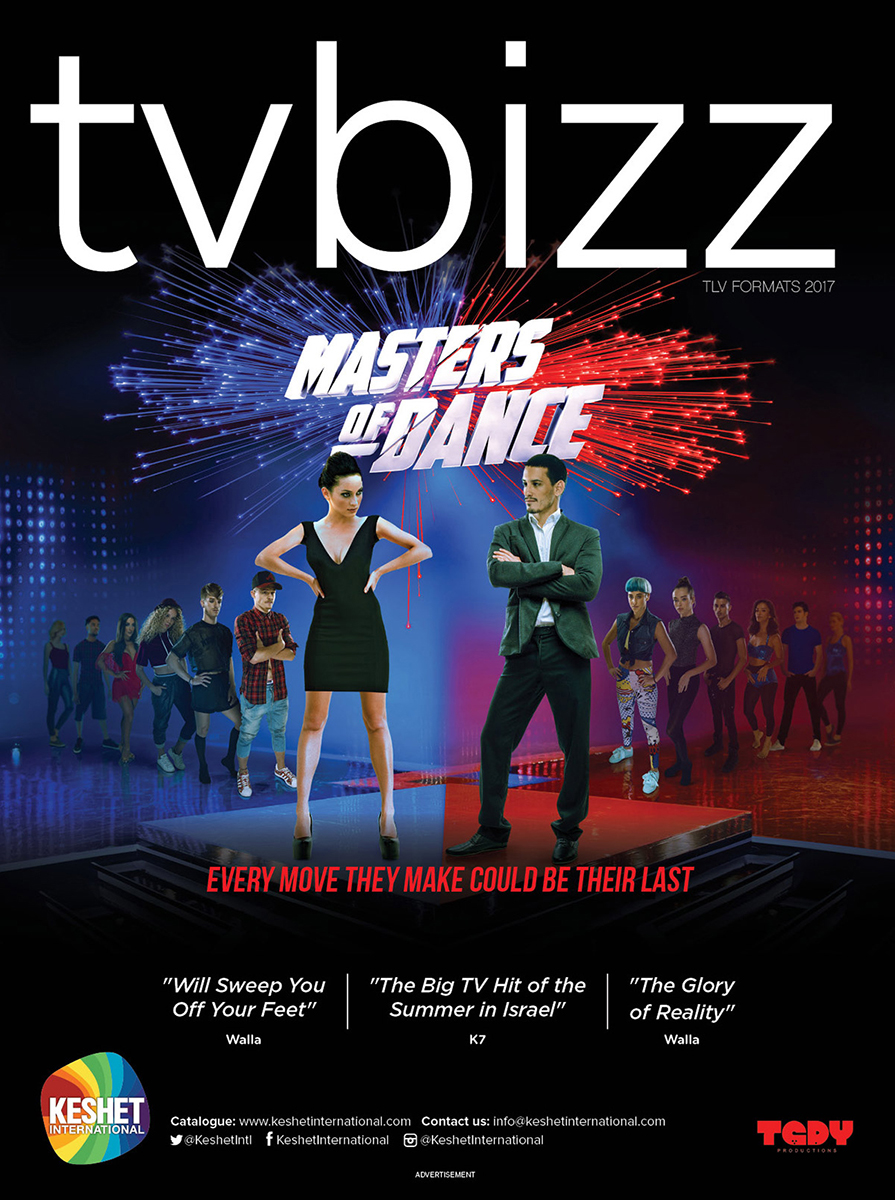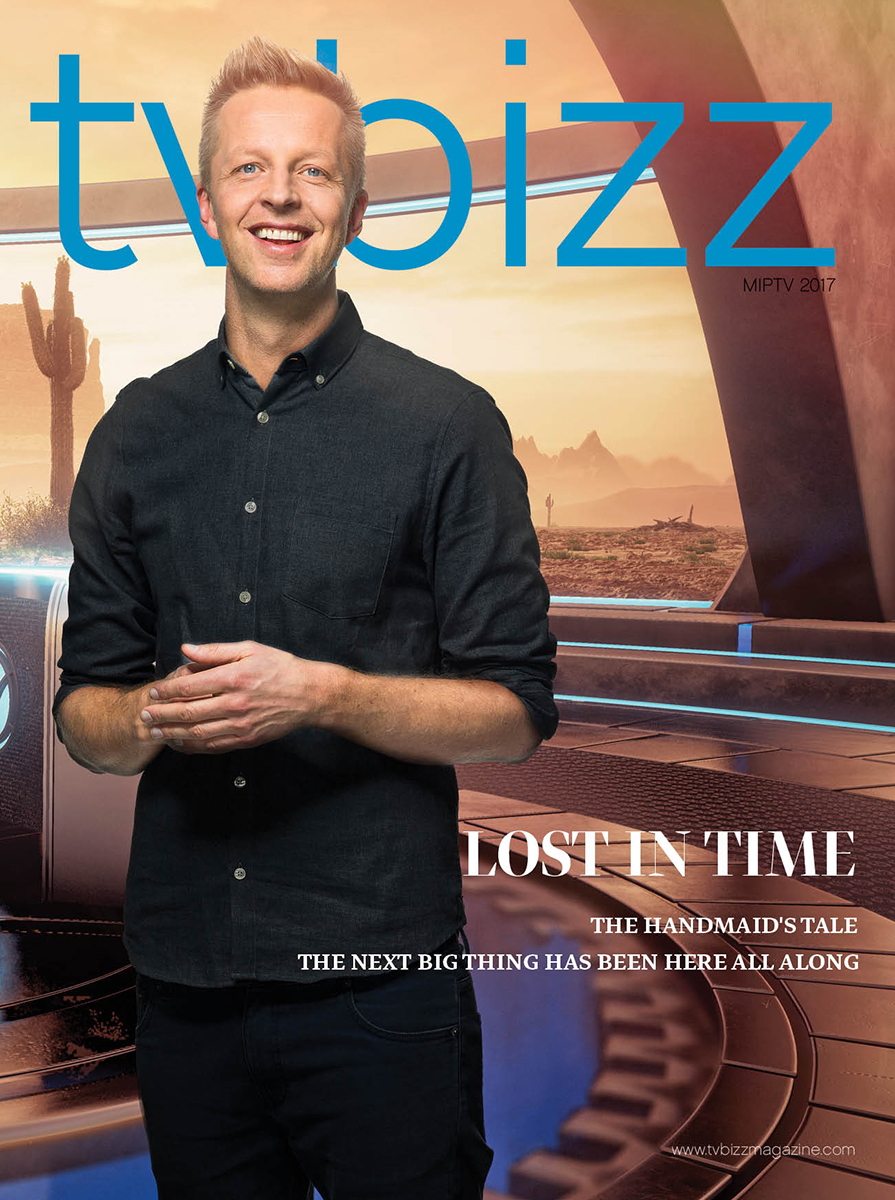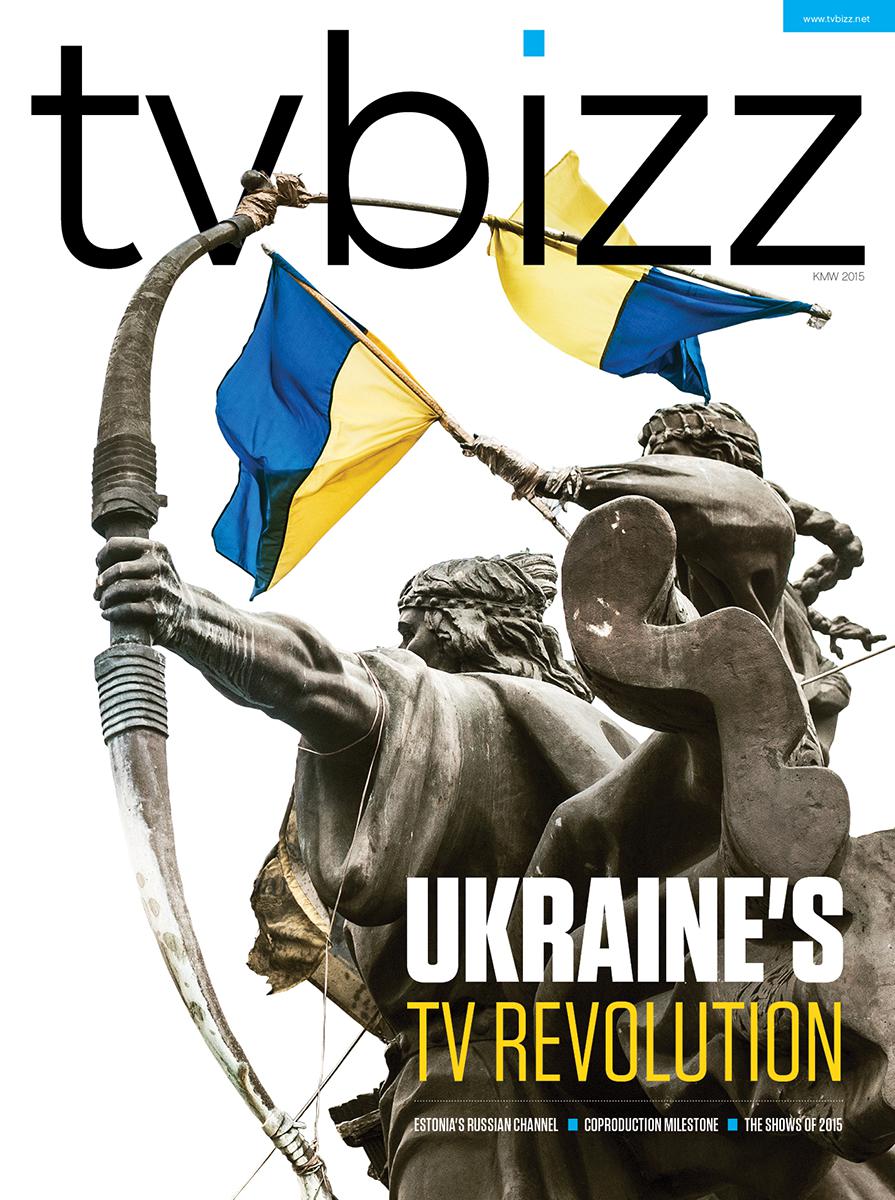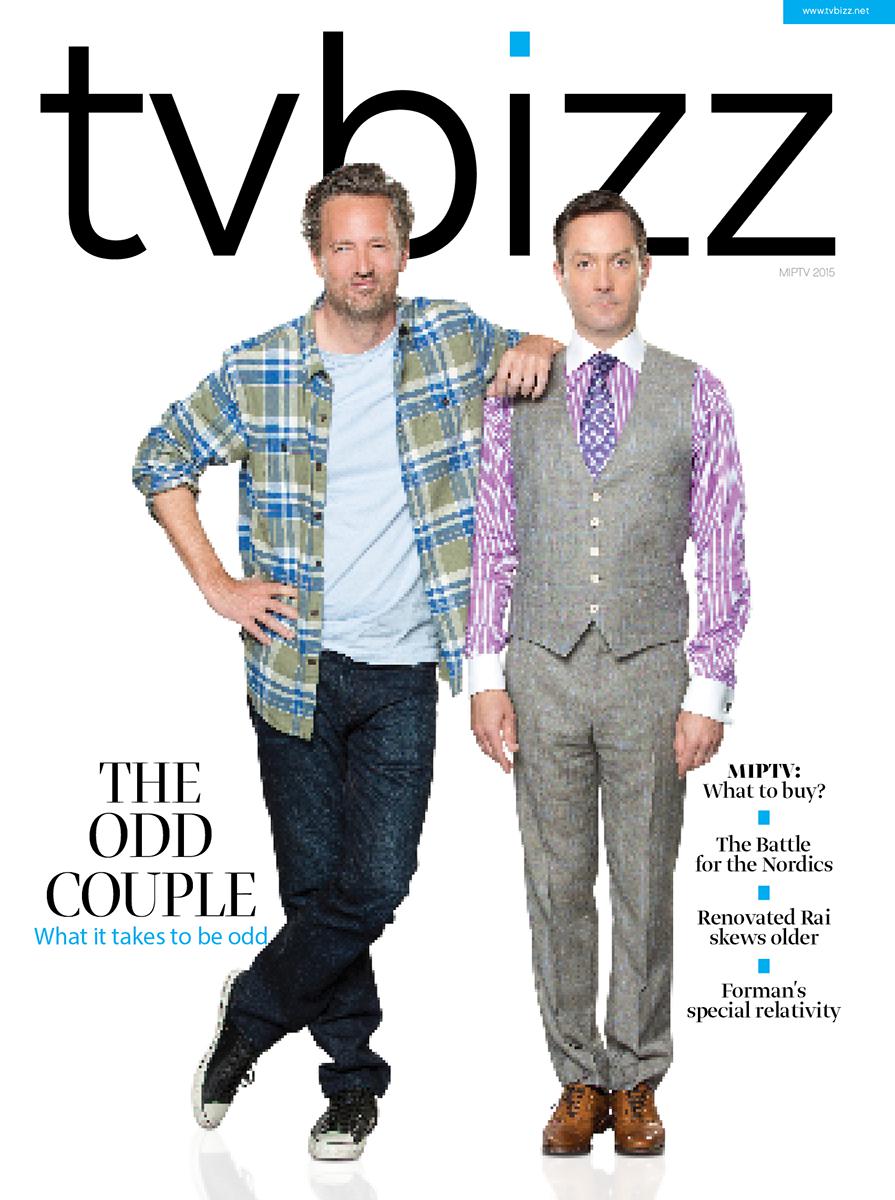The Answer is AI - Interview with Futuri Media CEO Daniel Anstandig
As the technology evolves and companies look for answers what the future holds, Futuri Media’s CEO Daniel Anstandig says that the answer is one – AI.
Anstandig leads the US-based software company which has been making the headlines in recent months with its revolutionary media solutions aimed at driving both audience engagement and advertising sales. In this exclusive interview with Georgi R. Chakarov, Daniel discusses the latest AI-powered innovations and how they will transform the media business.
Anstandig leads the US-based software company which has been making the headlines in recent months with its revolutionary media solutions aimed at driving both audience engagement and advertising sales. In this exclusive interview with Georgi R. Chakarov, Daniel discusses the latest AI-powered innovations and how they will transform the media business.

Daniel Anstandig, CEO and co-founder of Futuri Media
Daniel, you are CEO and co-founder of Futuri Media. When was your company founded, what are your main activities and businesses you are targeting with your products?
Since Futuri was launched in 2009, we’ve been passionately dedicated to equipping media companies with innovative technology. We are living in an incredibly fast-paced world, and everyone is expected to achieve more with less. Our team is always looking ahead, anticipating the next big challenge in the media industry, so we can develop the tools you’ll need to stay ahead of the curve. Currently, we’re doubling down on our efforts to support TV broadcasters and streaming services, knowing that your success in these areas is more critical than ever before.
Media companies, both large and small, face the challenge of shrinking budgets and teams, yet there’s still a pressing need for TV to produce engaging content to maintain its appeal. As the production costs of entertainment and news escalate and audience demand continues to grow, the question arises: How can media companies keep captivating their viewers?
The answer is AI.
At Futuri, we’ve developed a range of AI tools not just to enhance efficiency but to fundamentally transform how TV stations create content. These tools are designed to foster personalized viewer experiences, improve ratings and audience growth, and introduce innovative approaches to programming and advertising.
As CEO, my role involves looking forward and identifying the future needs of media audiences. I engage in regular discussions with executives and board members about their challenges and concerns. We conduct extensive audience research to understand viewer expectations from content creators. Additionally, I analyze our data and client success stories from around the world to identify effective strategies and upcoming needs.
My background in media (a background also shared by our executive team) informs our understanding of the vital role TV stations play, not just locally but in society at large. We recognize the challenges they face, from competition with streaming services and concerns about misinformation to limited resources. Media-focused AI can be a key part of the solution, enhancing the capabilities of media professionals globally.
Artificial intelligence (AI) has been the Topic lately, in all walks of life but especially in content production. What are its main advantages in your opinion? Are companies willing to adopt it?
Ever since ChatGPT arrived on the scene in 2022, flipping the script on what we thought we knew about AI, the game has changed. Initially, there was a lot of eyebrow-raising, doubting, and even pushback – from the media and other sectors. But fast forward to today, and the conversation has shifted dramatically. Now, everyone’s no longer asking “Should I be using AI?” but rather “How can I use AI?”
The early adopters have already played around with Large Language Models (LLMs) like ChatGPT or Gemini, using them for quick email responses or to spitball ideas. But AI’s potential stretches way beyond that.
In the world of content production, whether you’re in front of the camera or behind it, AI can be a game-changer. Think curating fresh local stories, whipping up scripts, crafting ads, or spreading content far and wide across different platforms – and that’s just scratching the surface.
The benefits of weaving AI into the fabric of media are crystal clear. So, yeah, companies are jumping on the AI bandwagon because, let’s face it, this is where media – and our world – is headed.
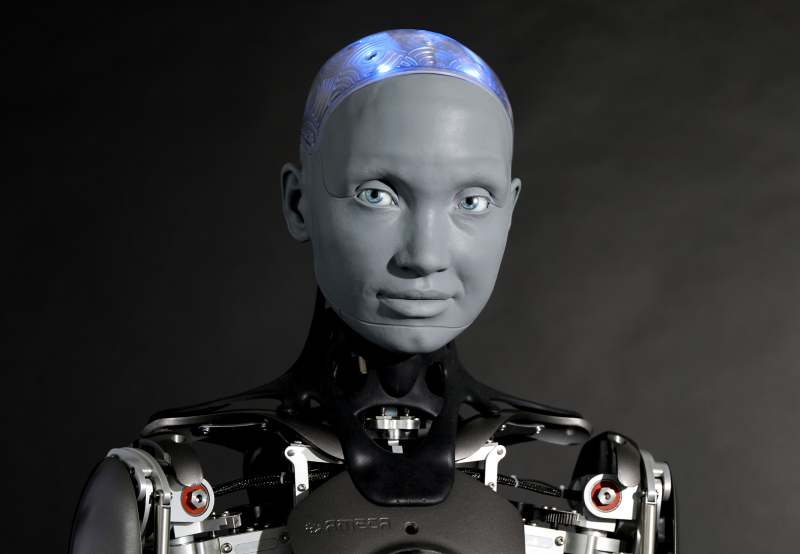
You have developed several tools that help media companies to attract, build and keep audiences. Could you briefly describe them?
Everything Futuri has developed is designed to address the specific challenges media companies and content/sales teams face.
POST, for example, is an AI tool that quickly converts broadcasts into podcasts. Immediately after a broadcast concludes, POST processes the audio, segments it, applies metadata, and distributes it across major platforms like Apple, Spotify, Google, as well as social media channels such as Facebook and YouTube. Tasks that once took hours now can be accomplished in seconds.
Addressing the time-consuming nature of creating spec commercials, we introduced SpotOn. Previously, developing a successful spec spot concept could attract significant advertising accounts but would take days to produce. SpotOn streamlines this process, generating ready-to-use spec commercials and promos that include scripts, lifelike synthetic voices, and soundtracks. TV stations also utilize SpotOn for creating ad breaks and promos, especially useful when breaking stories occur after their station’s voiceover talent has left. SpotOn instantly resolves these challenges with a few clicks.
For monitoring up-to-the-minute news stories and trends, Futuri’s TopicPulse employs Machine Learning to track real-time trends on platforms like Instagram, Twitter/X, Facebook, and over 250.000 news sources. This enables us to identify what’s trending in any local market and predict each station’s unique audience interests over the next 4-6 hours.
Companies like Futuri’s strategic partner Sinclair are leveraging AI to enhance sales efficiency and revenue growth. Our TopLine system combines AI technology with extensive sales research and data-driven presentations, enabling sales teams to explore new categories, secure more appointments, and engage with new advertiser segments.
You work with a lot of data. What do the numbers show? How are people responding to AI content and services?
We recently conducted a national survey of both TV and radio audiences to find out exactly how audiences are reacting to AI and explore their perceptions and expectations. What do audiences think about AI content? What are they accepting of and what are they resistant to? I’ll be sharing these findings on the mainstage at NAB, so I can’t say too much here. But what I can say is that we have a clear path with AI that audiences are not only ready for, they’re even expecting it. I’ll be sharing more at NAB, but one stat that has stuck with me is that 75% of respondents were either somewhat or very likely to watch AI-created video content, and they are open to AI avatars/anchors presenting content. Technology, science, and entertainment news topped the list of content people would be most interested in watching.

To some people AI is synonymous with machine learning. Do you think AI-generated content can become indistinguishable from that created by humans and are there any threats if that happens?
In many ways, yes. I think that’s possible. Audio AI Hosts, like Futuri’s AudioAI voices that are presenting weather/news and hosting shows on radio/streams are already nearly impossible to distinguish from human DJs; and AI is just getting started! But with that said, the best content that we’re seeing, and I believe the best content we’ll continue to see, is that which is created with human creativity, oversight, and authenticity - albeit augmented with AI tools.
I can understand how some people might perceive the changes we’re experiencing as threats. With every revolutionary technology, there has been skepticism and even pessimism. But I can tell you that the vast majority of those in media (and their audiences) are open and optimistic about the possibilities of AI and what it could mean for how we communicate and connect with one another.
Next week (April 15) you will hold a major presentation with an AI-humanoid. What can we expect from “the world’s first AI-Human presentation”?
I’m honored and excited to be presenting on the main stage at this year’s NAB, in what promises to be a historic session. This will mark the world’s first keynote co-presented by both a human and AI, featuring the most advanced AI-powered humanoid robot in the world, Ameca. We aim to unveil current audience perceptions of AI and their readiness to integrate AI into their media consumption, sharing fresh off the presses study data across the audio and video landscape. Beyond providing insights, this session will be interactive, demonstrating the sophistication, effectiveness and fun of AI in today’s technology landscape.
“AI influencers” are a hot trend on social media and we are already seeing examples of “AI hosts” on TV. Do you believe that this could become a “norm” in the future?
I believe AI hosts will become part of the broadcasting landscape more and more. Through our Futuri AudioAI technology, we’re offering broadcasters AI-hosted alternatives for hours where they don’t have humans, moving away from the standard pre-recorded or syndicated content. This way, listeners get to enjoy content that’s both live and local, exactly what they’re looking for.
Is this going to be a thing for TV as well? Yes, quite probable.
But a big caveat, audience receptivity to AI integration hinges on transparency – it’s crucial that viewers know when they’re interacting with AI. They’re not looking to be deceived; they want content that resonates with them, and information that’s both current and accurate. AI has the capability to ensure a level of service continuity, even in the absence of human staff, but audiences want to know when that’s happening.
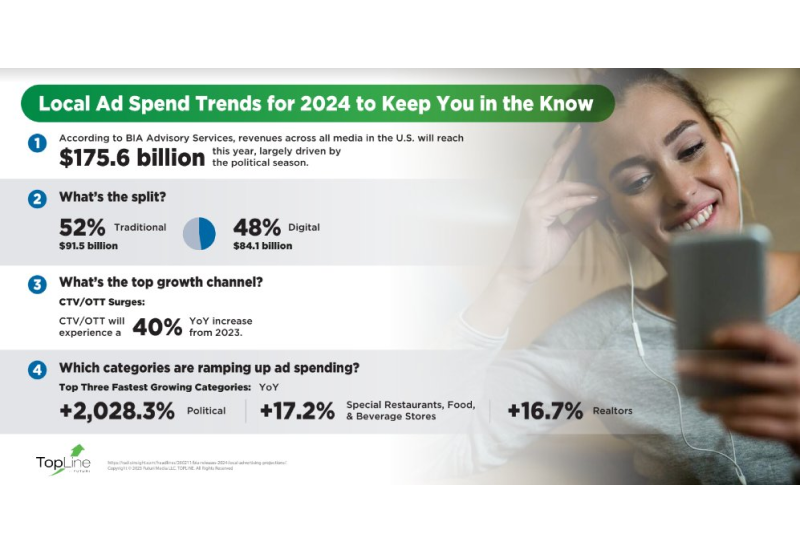
The European Union recently adopted the AI Act. What is your opinion on AI regulations, what are the necessary steps and safeguards that need to be considered?
We’re talking about technology that’s as powerful as it is promising, so making sure it plays nice and fair is crucial. There are some guardrails that, to me, should be non-negotiable.
First off, transparency is key. People should know when they’re interacting with AI, understand what it’s doing, and why. Then there’s the matter of fairness and bias. We’ve got to ensure AI doesn’t pick up and perpetuate the biases humans are working hard to leave behind. These types of biases were a huge issue in the early days of AI, and are slowly (perhaps too slowly) being resolved.
Another non-negotiable are privacy and data protections. With AI feasting on data to learn and grow, making sure that data is handled with the utmost care is essential. And let’s not forget accountability – when AI makes a decision, there should be a clear line back to humans who can explain and, if necessary, correct course. Just like with self-driving cars, it’s essential to have a human behind the wheel in some way or another.
Finally, there’s safety and security. As AI becomes more integrated into everyday life, ensuring it’s safe to use and resilient against misuse is paramount. That means protections against hacking, malware, or even bad code that was written internally.
So yeah, stepping forward with regulations like the EU’s AI Act is a step in this direction. It’s about setting the ground rules for a tech that’s going to shape our future. Think of it as laying down the law in the wild west of technology – it’s all about keeping the peace and making sure everyone benefits from the incredible potential AI has to offer. (And so things don’t become some nightmarish sci-fi experience).
Since Futuri was launched in 2009, we’ve been passionately dedicated to equipping media companies with innovative technology. We are living in an incredibly fast-paced world, and everyone is expected to achieve more with less. Our team is always looking ahead, anticipating the next big challenge in the media industry, so we can develop the tools you’ll need to stay ahead of the curve. Currently, we’re doubling down on our efforts to support TV broadcasters and streaming services, knowing that your success in these areas is more critical than ever before.
Media companies, both large and small, face the challenge of shrinking budgets and teams, yet there’s still a pressing need for TV to produce engaging content to maintain its appeal. As the production costs of entertainment and news escalate and audience demand continues to grow, the question arises: How can media companies keep captivating their viewers?
The answer is AI.
At Futuri, we’ve developed a range of AI tools not just to enhance efficiency but to fundamentally transform how TV stations create content. These tools are designed to foster personalized viewer experiences, improve ratings and audience growth, and introduce innovative approaches to programming and advertising.
As CEO, my role involves looking forward and identifying the future needs of media audiences. I engage in regular discussions with executives and board members about their challenges and concerns. We conduct extensive audience research to understand viewer expectations from content creators. Additionally, I analyze our data and client success stories from around the world to identify effective strategies and upcoming needs.
My background in media (a background also shared by our executive team) informs our understanding of the vital role TV stations play, not just locally but in society at large. We recognize the challenges they face, from competition with streaming services and concerns about misinformation to limited resources. Media-focused AI can be a key part of the solution, enhancing the capabilities of media professionals globally.
Artificial intelligence (AI) has been the Topic lately, in all walks of life but especially in content production. What are its main advantages in your opinion? Are companies willing to adopt it?
Ever since ChatGPT arrived on the scene in 2022, flipping the script on what we thought we knew about AI, the game has changed. Initially, there was a lot of eyebrow-raising, doubting, and even pushback – from the media and other sectors. But fast forward to today, and the conversation has shifted dramatically. Now, everyone’s no longer asking “Should I be using AI?” but rather “How can I use AI?”
The early adopters have already played around with Large Language Models (LLMs) like ChatGPT or Gemini, using them for quick email responses or to spitball ideas. But AI’s potential stretches way beyond that.
In the world of content production, whether you’re in front of the camera or behind it, AI can be a game-changer. Think curating fresh local stories, whipping up scripts, crafting ads, or spreading content far and wide across different platforms – and that’s just scratching the surface.
The benefits of weaving AI into the fabric of media are crystal clear. So, yeah, companies are jumping on the AI bandwagon because, let’s face it, this is where media – and our world – is headed.

You have developed several tools that help media companies to attract, build and keep audiences. Could you briefly describe them?
Everything Futuri has developed is designed to address the specific challenges media companies and content/sales teams face.
POST, for example, is an AI tool that quickly converts broadcasts into podcasts. Immediately after a broadcast concludes, POST processes the audio, segments it, applies metadata, and distributes it across major platforms like Apple, Spotify, Google, as well as social media channels such as Facebook and YouTube. Tasks that once took hours now can be accomplished in seconds.
Addressing the time-consuming nature of creating spec commercials, we introduced SpotOn. Previously, developing a successful spec spot concept could attract significant advertising accounts but would take days to produce. SpotOn streamlines this process, generating ready-to-use spec commercials and promos that include scripts, lifelike synthetic voices, and soundtracks. TV stations also utilize SpotOn for creating ad breaks and promos, especially useful when breaking stories occur after their station’s voiceover talent has left. SpotOn instantly resolves these challenges with a few clicks.
For monitoring up-to-the-minute news stories and trends, Futuri’s TopicPulse employs Machine Learning to track real-time trends on platforms like Instagram, Twitter/X, Facebook, and over 250.000 news sources. This enables us to identify what’s trending in any local market and predict each station’s unique audience interests over the next 4-6 hours.
Companies like Futuri’s strategic partner Sinclair are leveraging AI to enhance sales efficiency and revenue growth. Our TopLine system combines AI technology with extensive sales research and data-driven presentations, enabling sales teams to explore new categories, secure more appointments, and engage with new advertiser segments.
You work with a lot of data. What do the numbers show? How are people responding to AI content and services?
We recently conducted a national survey of both TV and radio audiences to find out exactly how audiences are reacting to AI and explore their perceptions and expectations. What do audiences think about AI content? What are they accepting of and what are they resistant to? I’ll be sharing these findings on the mainstage at NAB, so I can’t say too much here. But what I can say is that we have a clear path with AI that audiences are not only ready for, they’re even expecting it. I’ll be sharing more at NAB, but one stat that has stuck with me is that 75% of respondents were either somewhat or very likely to watch AI-created video content, and they are open to AI avatars/anchors presenting content. Technology, science, and entertainment news topped the list of content people would be most interested in watching.

To some people AI is synonymous with machine learning. Do you think AI-generated content can become indistinguishable from that created by humans and are there any threats if that happens?
In many ways, yes. I think that’s possible. Audio AI Hosts, like Futuri’s AudioAI voices that are presenting weather/news and hosting shows on radio/streams are already nearly impossible to distinguish from human DJs; and AI is just getting started! But with that said, the best content that we’re seeing, and I believe the best content we’ll continue to see, is that which is created with human creativity, oversight, and authenticity - albeit augmented with AI tools.
I can understand how some people might perceive the changes we’re experiencing as threats. With every revolutionary technology, there has been skepticism and even pessimism. But I can tell you that the vast majority of those in media (and their audiences) are open and optimistic about the possibilities of AI and what it could mean for how we communicate and connect with one another.
Next week (April 15) you will hold a major presentation with an AI-humanoid. What can we expect from “the world’s first AI-Human presentation”?
I’m honored and excited to be presenting on the main stage at this year’s NAB, in what promises to be a historic session. This will mark the world’s first keynote co-presented by both a human and AI, featuring the most advanced AI-powered humanoid robot in the world, Ameca. We aim to unveil current audience perceptions of AI and their readiness to integrate AI into their media consumption, sharing fresh off the presses study data across the audio and video landscape. Beyond providing insights, this session will be interactive, demonstrating the sophistication, effectiveness and fun of AI in today’s technology landscape.
“AI influencers” are a hot trend on social media and we are already seeing examples of “AI hosts” on TV. Do you believe that this could become a “norm” in the future?
I believe AI hosts will become part of the broadcasting landscape more and more. Through our Futuri AudioAI technology, we’re offering broadcasters AI-hosted alternatives for hours where they don’t have humans, moving away from the standard pre-recorded or syndicated content. This way, listeners get to enjoy content that’s both live and local, exactly what they’re looking for.
Is this going to be a thing for TV as well? Yes, quite probable.
But a big caveat, audience receptivity to AI integration hinges on transparency – it’s crucial that viewers know when they’re interacting with AI. They’re not looking to be deceived; they want content that resonates with them, and information that’s both current and accurate. AI has the capability to ensure a level of service continuity, even in the absence of human staff, but audiences want to know when that’s happening.

The European Union recently adopted the AI Act. What is your opinion on AI regulations, what are the necessary steps and safeguards that need to be considered?
We’re talking about technology that’s as powerful as it is promising, so making sure it plays nice and fair is crucial. There are some guardrails that, to me, should be non-negotiable.
First off, transparency is key. People should know when they’re interacting with AI, understand what it’s doing, and why. Then there’s the matter of fairness and bias. We’ve got to ensure AI doesn’t pick up and perpetuate the biases humans are working hard to leave behind. These types of biases were a huge issue in the early days of AI, and are slowly (perhaps too slowly) being resolved.
Another non-negotiable are privacy and data protections. With AI feasting on data to learn and grow, making sure that data is handled with the utmost care is essential. And let’s not forget accountability – when AI makes a decision, there should be a clear line back to humans who can explain and, if necessary, correct course. Just like with self-driving cars, it’s essential to have a human behind the wheel in some way or another.
Finally, there’s safety and security. As AI becomes more integrated into everyday life, ensuring it’s safe to use and resilient against misuse is paramount. That means protections against hacking, malware, or even bad code that was written internally.
So yeah, stepping forward with regulations like the EU’s AI Act is a step in this direction. It’s about setting the ground rules for a tech that’s going to shape our future. Think of it as laying down the law in the wild west of technology – it’s all about keeping the peace and making sure everyone benefits from the incredible potential AI has to offer. (And so things don’t become some nightmarish sci-fi experience).









